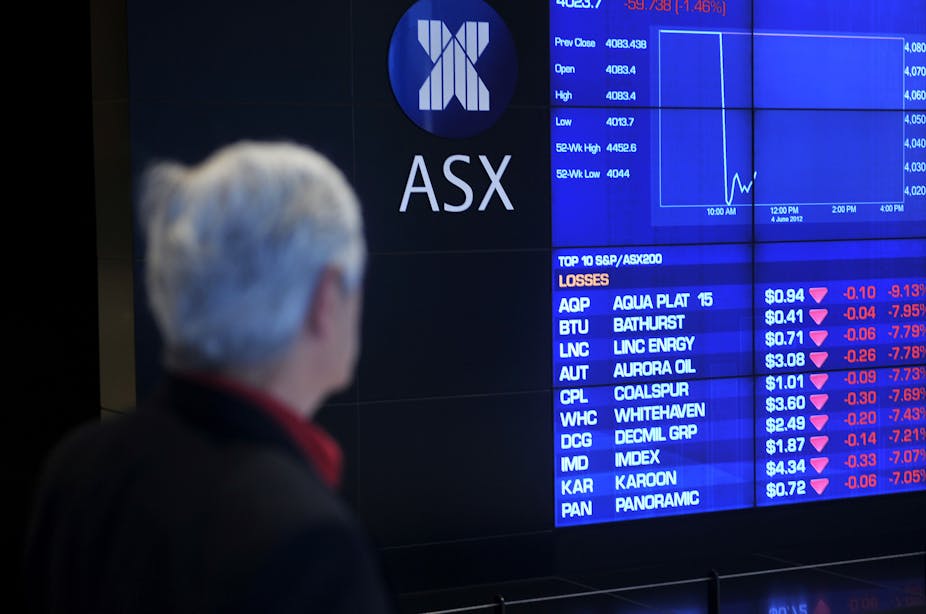In a fragile world and with a particularly fragile share market, Australia’s corporate regulators have seen their role in policing the area of continuous disclosure multiply.
Disclosure requirements are certainly not new to company law. At the end of the 19th century, companies listing on the Sydney stock exchange were required to promptly notify alteration of capital, calls, or other material information.
The formation of a national stock exchange in 1987 to facilitate trading of electronic securities inadvertently heralded several changes in the framework for monitoring disclosure. Early share price fluctuations effected investor confidence which in turn led to a review of the legislative framework surrounding disclosure.
From this initiative came the introduction of the continuous disclosure regime for listed companies in 1994. Investor confidence was the goal and it remains so today.
But from this fairly slow start, the profile of the continuous disclosure provisions has grown dramatically.
The Australian Securities and Investment Commission (ASIC) and the Australian Securities Exchange (ASX) are in the process of reforming disclosure laws, and released some revision to Guidance Note 8 of the ASX Listing Rules, which governs disclosure, in October last year.
The overall area is regulated in Chapter 6CA (ss674-678) Corporations Act and through the ASX Listing Rules (Chapter 3). Section 674 requires notification of information not generally available that a reasonable person would expect, if it were generally available, to have a material effect on the price or value of the securities.
Listing Rule 3.1 adds a layer of obligation by requiring that ASX be immediately told once the company becomes aware of such information.
In particular, the Australian Securities and Investment Commission (ASIC) has increasingly made use of the infringement notice procedure in Pt. 9.4AA Corporations Act to enable it to deal with breaches of s 674 more swiftly. Compliance with the infringement notice means that the entity avoids further legal proceedings and perhaps any adverse publicity that may result from such proceedings.
But the two vexing problems surrounding the current interest in continuous disclosure are the place of social media in disseminating information and opinion and the wisdom - or otherwise - of trading halts.
In 1994 when the framework of the continuous disclosure provisions was introduced, social media was infant and the need to monitor such sites by companies not a disclosure issue.
However the recent revisions to Guidance Note 8 of the ASX Listing Rules make it an issue today.
Speaking at the Chartered Secretaries Australia Annual Conference last month, ASIC Commissioner John Price said he believed companies needed to be more aware of what information the market was trading on, although he conceded that it would be impractical to monitor every social media outlet.
The revised guidance note brings the definition of “officer” into line with the Corporations Act. This may unwittingly create uncertainty and chain of command difficulties for disclosing entities.
Under the Listing Rules a company becomes “aware” of information as soon as an officer has, or ought reasonably to have, come into the possession of the information. This is a broad category extending to senior company executives, receivers and administrators.
This means that monitoring what information is “reasonably” available is necessary across a number of possible positions and responsibilities, and this in turn is related to two very difficult ideas to tie down – the reasonable person, and the social media.
Another issue to arise from the revised guidance Note is that of trading halts.
The recent Whitehaven Coal hoax, for instance, set off a sell-down of the company’s shares resulting in a sudden fall in share price.
Whitehaven did call a trading halt and Whitehaven’s shares recovered. But the incident brought the relationship between the power of media information, and the difficulties with deciphering and reacting to false announcements, to the fore.
Trading halts elicit diametrically opposed responses from regulators and big business. Recent media has focused on the concern of big companies such as BHP and Telstra, which have expressed concern a more active approach to trading halts could result in a negative market reaction.
Trading halts can obviously cause some investor concern, particularly with institutional investors. However the relatively low proportion of companies the requirement would apply to, and the upside to investor confidence if a more supportive environment for trading halts exists, suggest the argument has a stronger claim to long term market stability. In the larger picture, the differing perspectives are merely an aspect of the regulation/deregulation dichotomy.
Although there is varying evidence on the effect of trading halts on trading volume and price volatility it is more certain that where an efficient trading halt procedure quarantines the downsides of negative market information the possibility of enhanced confidence during normal trading periods increases.
There are many ways the market can be misinformed. Revising the continuous disclosure provisions will not necessarily remove them all, but in a market where risk, complexity and technology are obvious, the refining, and redefining, of the idea of disclosure, is crucial.

